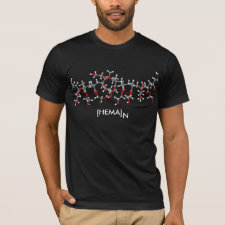
Authors: Sun Z, Schüssler W, Sengl M, Niessner R, Knopp D
Article Title: Selective trace analysis of diclofenac in surface and wastewater samples using solid-phase extraction with a new molecularly imprinted polymer.
Publication date: 2008
Journal: Analytica Chimica Acta
Volume: 620
Issue: (1-2)
Page numbers: 73-81.
DOI: 10.1016/j.aca.2008.05.020
Alternative URL: http://www.sciencedirect.com/science/article/B6TF4-4SJG69M-3/1/ee19226105580c9f47e30dd68e5a4a6e
Abstract: A new molecularly imprinted polymer (MIP) for trace analysis of diclofenac in environmental water samples was prepared by a non-covalent protocol in which diclofenac was used as a template molecule. Diclofenac is a member of the class of drugs termed non-steroidal anti-inflammatory drugs (NSAIDs) which belong to the most frequently detected pharmaceuticals in the water-cycle in Europe. The MIP was synthesized using 2-vinylpyridine (2-VP) and ethylene glycol dimethacrylate (EGDMA) as a functional monomer and cross-linker, respectively, and bulk thermal polymerization method. 1H NMR spectroscopy was used to study the interaction between diclofenac and 2-VP mixed in toluene-d8 in pre-polymerization complex. Two non-covalent bonds were formed i.e. ionic interaction and hydrogen bonding. The binding characteristics of the MIP and diclofenac were evaluated using equilibrium binding experiments. Scatchard plot analysis revealed that two classes of binding sites were formed with dissociation constants of 55.6áμmoláL-1 and 1.43ámmoláL-1, respectively. Various parameters affecting the extraction efficiency of the polymers have been evaluated to achieve the selective preconcentration of diclofenac from aqueous samples and to reduce non-specific interactions. This resulted in an MISPE-LC/DAD method allowing the direct extraction of the analyte from sample matrix with a selective wash using dichloromethane/acetonitrile (94:6, v/v) followed by elution with dichloromethane/methanol (85:15, v/v). The recovery of a 100áng diclofenac standard spiked into 200ámL of blank surface water was 96%, with good precision (RSDá=á3.3%, ná=á3). The MISPE was demonstrated to be applicable to the analysis of diclofenac in raw influent and final effluent wastewater samples from sewage treatment plant and revealed diclofenac concentrations of 1.31á¦á0.055áμgáL-1 (ná=á3) and 1.60á¦á0.049áμgáL-1 (ná=á3), respectively. Yielded results were in good agreement with the corresponding LC/TIS/MS/MS data obtained by an independent laboratory which were 1.40 and 1.50áμgáL-1 for influent and effluent samples
Template and target information: diclofenac, non-steroidal anti-inflammatory drugs, NSAIDs
Author keywords: Non-steroidal anti-inflammatory drug, diclofenac, molecularly imprinted polymer, Molecularly imprinted SPE, Wastewater, LC, TIS, MS, MS



Join the Society for Molecular Imprinting

New items RSS feed
Sign-up for e-mail updates:
Choose between receiving an occasional newsletter or more frequent e-mail alerts.
Click here to go to the sign-up page.
Is your name elemental or peptidic? Enter your name and find out by clicking either of the buttons below!
Other products you may like:
 MIPdatabase
MIPdatabase









